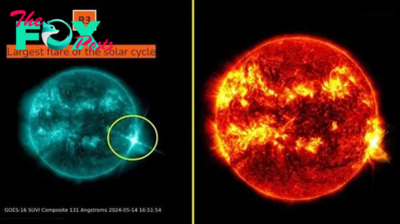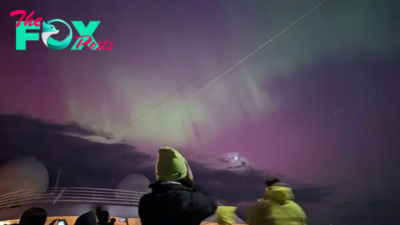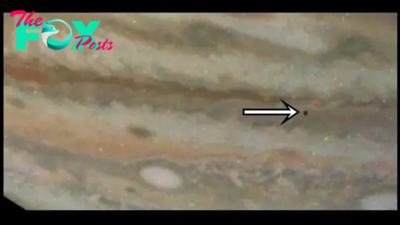Science
Sun's chaotic peak triggers record-breaking 'global auroras' on Mars
Invisible "global auroras" have been covering Mars frequently over the past few months, according to data collected by a NASA spacecraft. The rise in these planet-wide light shows, including an unprecedented "aurora hat trick" in February, is tied to solar maximum, the peak in the sun's roughly 11-year solar cycle.
Mars is no stranger to auroras. The planet is often bombarded with high-energy radiation from the sun, known as solar energetic particles (SEPs), which penetrate the red world's thin atmosphere and excite molecules of hydrogen, causing them to emit light, similar to how auroras work on Earth. However, unlike the southern and northern lights on our planet, Martian auroras — also known as proton auroras — emit ultraviolet light instead of visible light, meaning they cannot be seen with the naked eye.
NASA's Mars Atmosphere and Volatile Evolution (MAVEN) spacecraft, which has been orbiting the Red Planet since 2013, detected the first proton auroras on Mars in 2016. Most of the auroras observed by MAVEN have been localized to specific regions, but every once in a while, these invisible light shows cover an entire hemisphere that is facing the sun. When this happens, researchers call it a global aurora.
In recent months, the number of global auroras and other auroral activity have risen significantly, Spaceweather.com reported.
"Mars is experiencing its greatest level of auroral activity in the past 10 years," Nick Schneider, a planetary scientist at the University of Colorado Boulder and lead scientist of MAVEN's Imaging Ultraviolet Spectrograph instrument group, told Spaceweather.com. "In February alone, there were three episodes of global auroras — an 'aurora hat trick' we've never seen before."

The global aurora events can last several days; the triple February auroras occurred on Feb. 3-4, Feb. 7-10 and Feb. 15-16. Although these light shows could not be seen directly, researchers used MAVEN data to visualize the auroras (see below).
Mars is not the only planet other than Earth to have auroras. Similar light shows have been spotted on Mercury, Jupiter, Saturn and Uranus, according to Live Science's sister site Space.com. Last year, scientists also spotted aurora-like phenomena on the sun for the first time.
-

 Science1d ago
Science1d agoTree rings reveal summer 2023 was the hottest in 2 millennia
-

 Science1d ago
Science1d agoSun launches strongest solar flare of current cycle in monster X8.7-class eruption
-

 Science1d ago
Science1d agoStrange, red-glowing planet may be 'melting from within,' scientists report
-

 Science2d ago
Science2d agoWhy are auroras different colors?
-

 Science2d ago
Science2d agoAurora photos: Stunning northern lights glisten after biggest geomagnetic storm in 21 years
-

 Science2d ago
Science2d agoEarth may have had freshwater and continents just 200 million years after forming, ancient crystals reveal
-

 Science2d ago
Science2d ago'Extreme' geomagnetic storm that painted Earth with auroras this weekend was the most powerful in 21 years
-

 Science2d ago
Science2d agoWhy do earthquakes happen far away from plate boundaries?

















